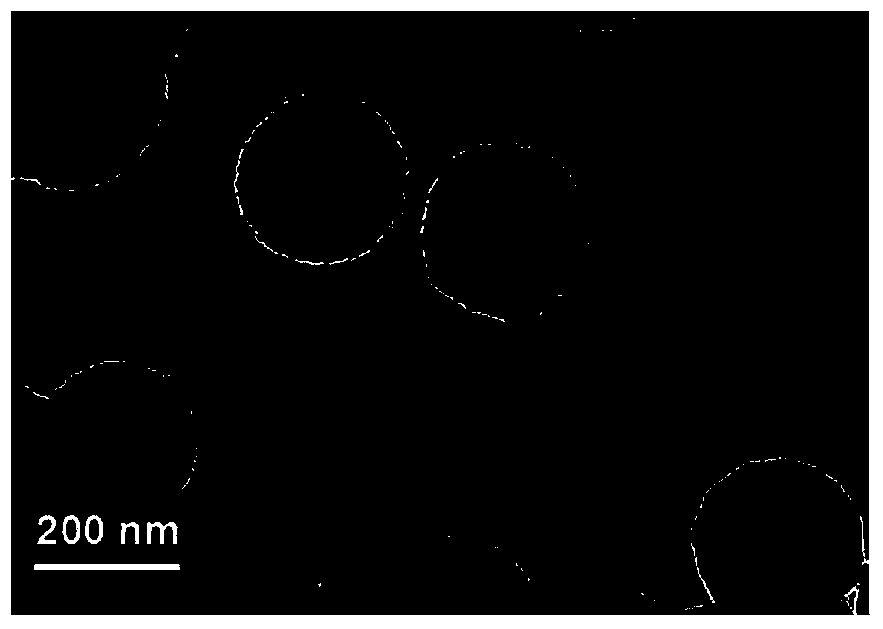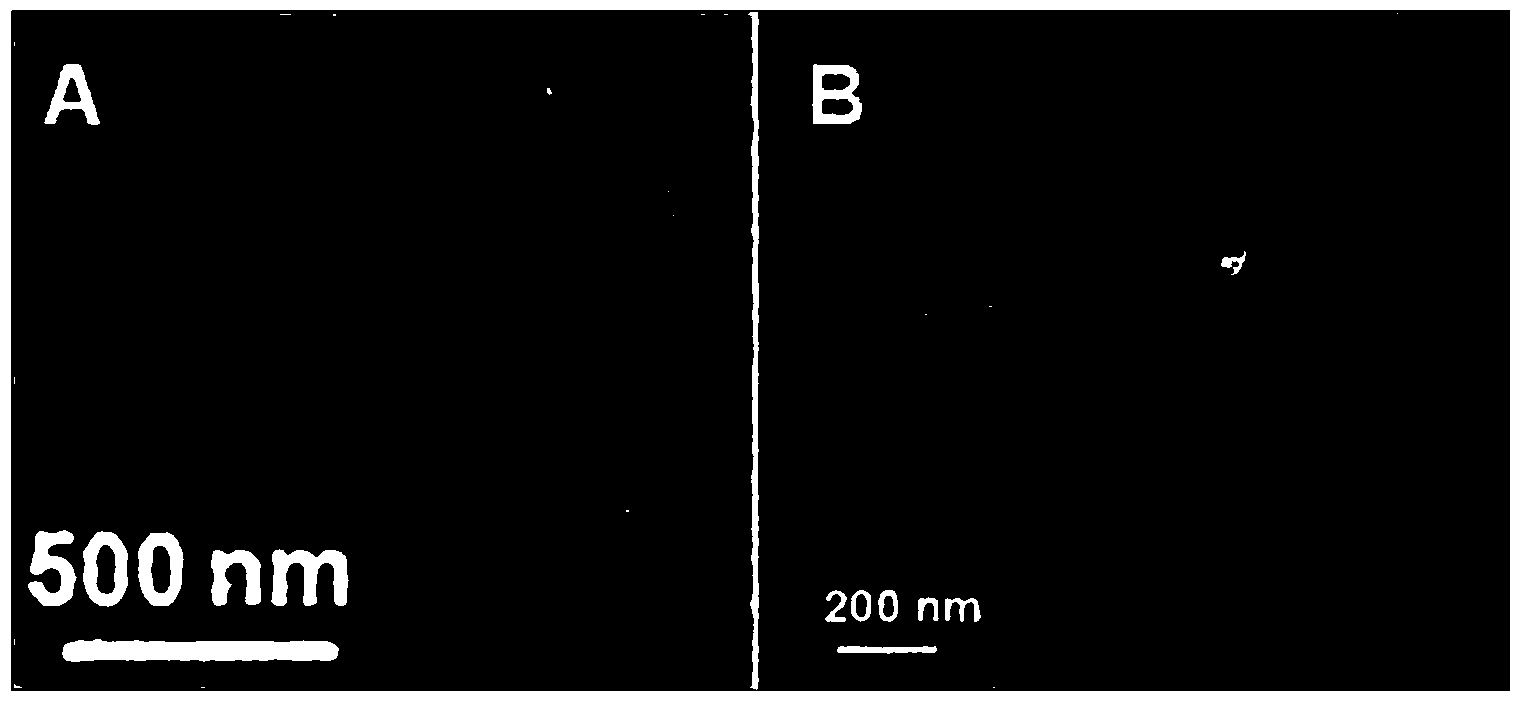Method of reducing cadmium ions by M13 phage-mediated nano-iron
A bacteriophage and cadmium ion technology, which is applied in the fields of nanomaterial preparation and environmental pollution control, can solve the problems of low stability and easy agglomeration of nanometer iron, and achieves the effects of rapid reaction, improved reduction rate and good industrial application prospects.
- Summary
- Abstract
- Description
- Claims
- Application Information
AI Technical Summary
Problems solved by technology
Method used
Image
Examples
Embodiment 1
[0031] Example 1 Synthesis of zero-valent iron nanoparticles mediated by iron-adsorption-specific M13 phage
[0032] Amplification of iron-adsorbing specific M13 phage: M13 Phage Dodeceptide Display Peptide Library Kit (Ph.D.-12 TM Phage Display Peptide Library Kit) and Heptapeptide Display Peptide Library Kit (Ph.D.-7 TM Phage Display Peptide Library Kit) was purchased from NEB Corporation. Among them, dodecapeptide and heptapeptide are expressed at the N-terminus of pIII protein with 5 copies at one end of M13 phage, and the complexity is ~2.7×10 9a transformant. The N-terminal sequence of the pVIII protein of 2700 copies of each phage and wild-type phage in the peptide library is N-Ala-Glu-Gly-Asp-Asp-Pro-Ala.... Previous studies have shown that these M13 phages have the ability to specifically adsorb iron cations (Ling T, et al. Virus-mediated FCC Iron Nanoparticle Induced Synthesis of Uranium Dioxide Nanocrystal. Nanotechnology, 2008, 19(11): 115608-115613), saying ...
Embodiment 2
[0035] Example 2 Cadmium Adsorption Specific Genetic Engineering Phage M13 (Cd-s) Construction
[0036] 7-peptide panning with cadmium adsorption specificity: Use the M13 phage pIII protein heptapeptide display peptide library kit (Ph.D.-7TM Phage Display Peptide Library Kit) purchased from NEB Company to perform cadmium adsorption-specific peptide panning select. Cadmium metal blocks were purchased from Sinopharm Chemical Reagent Co., Ltd. (Shanghai). Put the small cadmium metal pieces in a small centrifuge tube containing 200 μl of TBST buffer containing 0.1% Tween-20, add 10 μl of the original peptide library of 7 peptides, and shake and combine for 60 minutes. Pour off the buffer, and use 200 μl of 0.1% Tween-20 TBST buffer to wash the metal block 10 times. Only the phage with strong binding force to Cd can remain on the metal block. Then put the metal blocks into 200 μl TBS buffer containing 20 mM Cd ions for competitive elution. The eluted phages were amplified accord...
Embodiment 3
[0049] Example 3M13(Fe-sp)-mediated synthesis of zero-valent nano-iron efficiently reduces M13(Cd-s) dispersed divalent cadmium ions
[0050] As shown in Example 1, M13(Fe-s)-mediated nanometer zero-valent iron was synthesized under normal temperature and pressure conditions. Then take 100 μL prepared CdCl 2 (500μM) aqueous solution, add 100μL methyl xylenol blue (0.125%) aqueous solution to it, after the color is stable, add about 10 11 M13 (Cd-s) in pfu, mix well to get M13 (Cd-s) dispersed divalent cadmium ions. Using M13(Fe-s)-mediated synthesis of zero-valent nano-iron as a reducing agent, the reduction reaction of M13(Cd-s) dispersed cadmium ions was carried out under normal temperature and pressure. After the two are fully mixed in the cuvette of the spectrophotometer, the absorbance is measured at 605nm immediately. The change in absorbance is produced by the color change of methylxylenol blue, which indicates the content of cadmium ions remaining in the solution. T...
PUM
| Property | Measurement | Unit |
|---|---|---|
| Titer | aaaaa | aaaaa |
Abstract
Description
Claims
Application Information
 Login to View More
Login to View More - R&D
- Intellectual Property
- Life Sciences
- Materials
- Tech Scout
- Unparalleled Data Quality
- Higher Quality Content
- 60% Fewer Hallucinations
Browse by: Latest US Patents, China's latest patents, Technical Efficacy Thesaurus, Application Domain, Technology Topic, Popular Technical Reports.
© 2025 PatSnap. All rights reserved.Legal|Privacy policy|Modern Slavery Act Transparency Statement|Sitemap|About US| Contact US: help@patsnap.com



